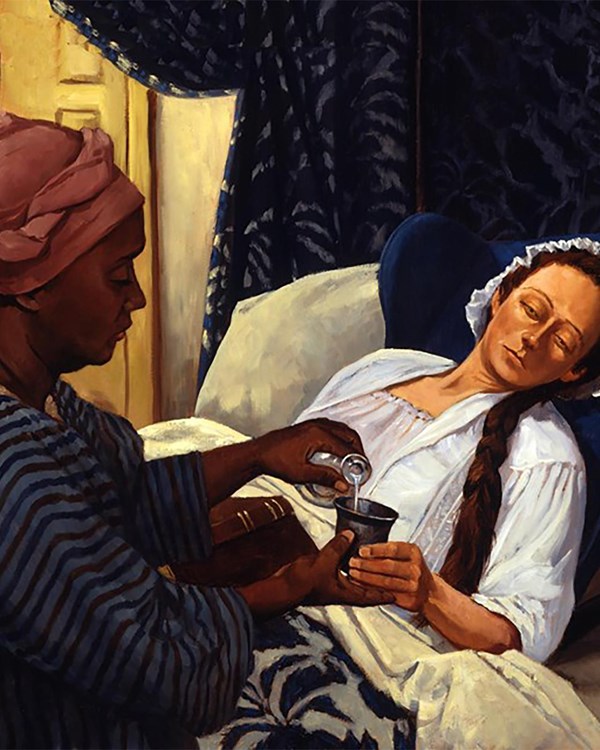Last updated: March 25, 2025
Person
Bet: Freedom Seeker

Who was Bet? Originally from Charles County, Maryland, Bet was a young enslaved woman that lived at Haberdeventure. In the summer of 1776, Thomas Stone was representing Maryland at the Continental Congress in Philadelphia. His wife, Margaret, was ill, probably due to the after effects of a smallpox inoculation. While we don't conclusively know if Bet was a enslaved worker in the house or the fields, she may have worked in the main house, and it is possible that one of Bet’s duties was to care for Margaret.
Even as Thomas Stone cast his vote for independence in July of 1776, over 30,000 British troops and German mercenaries were arriving near New York City. The American forces under General George Washington in the area of New York City were not well arranged to defend the city. Starting with the Battle of Brooklyn in late August, the British defeated Washington’s forces in a series of battles. It left many American soldiers killed, wounded, demoralized, or imprisoned. Many of those who had created the Declaration doubted that all of their work in creating the document would matter, some believing that a British victory was inevitable.
It was during this cloud of confusion that Bet decided to act. On Friday, October 3, 1776, Bet ran away.
According to an advertisement for a runaway slave in the Philadelphia Packet newspaper, when she was last seen, Bet was wearing several layers of clothes and carrying a “…new purple and yellow check fluff jacket and petticoat, white linen ditto, blue and white stamped linen ditto, cambric apron, red and white calico short gown, and black bombazeen quilted petticoat.” Bet may have taken the extra clothes in preparation for the upcoming winter or to sell for money. Since some of the clothes were new, it is also possible that Bet took some of Margaret’s own attire.
Another clue to Bet's position is that Thomas Stone offered the substantial reward of $20 for Bet’s return, a sum worth almost one-third an average worker's salary for a year. In the advertisement Stone noted “…that a Negro woman answering to her description, was seen at Brunswick, in Jersey.” It is a plausible assumption that Bet was heading northward, because free and runaway African Americans were moderately more accepted in New York and New England and there were more areas for her to hide in a large city. Stone advised anyone who caught Bet to turn her over to one of the numerous Maryland officers in the military encampments dispersed near New York City.
Bet's fate is unclear. Did she successfully escape? After Thomas and his wife both died in 1787, a slave named “Bett” was willed to their eldest daughter. Are “Bet” and “Bett” the same person?
